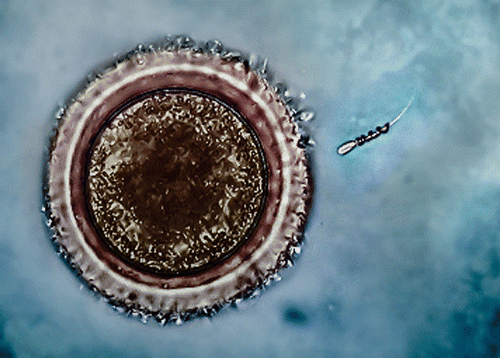2 Assisted Reproductive Technology Innovations For Treating Infertility: One Boosts ICSI And IVF Success Rates

Somewhere between 10 and 15 percent of American couples struggle with infertility, according to the Mayo Clinic. Among the latest scientific innovations for treating this all-too-common problem include two methods for assisting fertilization. One involves enhancing microscopes, while the other is more direct and actually helps sperm to swim.
Since 1981, infertile American couples have made use of assisted reproductive technologies (ART). Among the most common methods is in vitro fertilization, where a woman’s eggs are extracted, placed in a Petri dish with a man's sperm, and then, after fertilization occurs, implanted in the woman's uterus. Another frequently used method is intracytoplasmic sperm injection, which, as the name implies, consists of injecting a single sperm into an egg and then transferring it to a woman’s uterus.
A team of Tel Aviv University scientists believe their new microscopic technology, which is helpful for both ART methods, will increase a couple’s chances for success — not even a third (20 to 30 percent) of couples end with a live birth, according to the Centers for Disease Control and Prevention.
Seeing Sperm
Specifically, their technology addresses the fact that sperm cells are nearly transparent under standard microscopy methods, which are used whenever scientists perform clinical sperm analysis to prepare for insemination. Sperm blend into their surroundings when viewed through a microscope; a weak image contrast means scientists cannot identify strong candidates for fertilization. While staining seems like a way to solve this problem, the process affects the viability of sperm and potentially damages any resulting fetuses.
Taking this into account, the Tel Aviv University scientists developed a technology allowing scientists to perform clinical sperm analysis without the use of staining.
"Until now, clinicians have chosen the 'best' sperm according to their speed, but speed is not necessarily an indicator of DNA quality," Dr. Natan Shaked, department of biomedical engineering, said in a press release.
Yet some of the best sperm candidates are actually slow swimmers — or even immobile. His new device, a black box that is attached to a microscope and joined to software, harnesses phase imaging methods to assess the quality of sperm. His new tool is small, cost-effective, and easier to use than conventional interferometric imaging methods and so, he believes, it will lead to greater success when using ART treatments.
Approaching innovation from an entirely different angle, a team of scientist from the Institute for Integrative Nanosciences at IFW Dresden, Germany, came up with what can only be described as a fanciful technology, one best compared to a motorbike for sperm.
Mobilizing Sperm
“Low motility” problems, when healthy sperm just can’t swim, are one of the main causes of infertility. To give slow swimming sperm a helping hand, the German science team developed a unique solution: the Spermbot.
Based on previous work with micromotors, the researchers constructed mini-metal motorized helices just large enough to fit around the tail of a sperm. Using a rotating magnetic field as the joy stick, the researchers can direct the micromotor helices to slip around a sperm cell, to drive the sperm to an egg, and then to release the sperm for potential fertilization. Essentially, the spermbot serves as a power motor.
While their technique has not yet reached clinical testing, the researchers believe their initial demonstration shows promise. Watch the video below to learn more:
Sources: Medina-Sanchez M, Schwarz L, Meyer AK, Hebenstreit F, Schmidt OG. Cellular Cargo Delivery: Toward Assisted Fertilization by Sperm-Carrying Micromotors. Nano Letters. 2016.
Haifler M, Girshovitz P, Band G, Dardikman G, Madjar I, Shaked NT. Interferometric phase microscopy for label-free morphological evaluation of sperm cells. Fertility & Sterility. 2016.



























